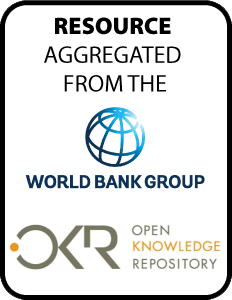Resource information
Urban sources of greenhouse gas (GHG)
emissions in Brazilian cities are growing. At the national
level, the dominance of greenhouse gas emissions from
deforestation in Brazil masks the fact that emissions from
other sectors, like Energy, Transport and Waste, are growing
quite rapidly in cities. Compared to other cities around the
world, Brazilian cities have low per capita GHG emissions
because of the high level of renewable energy production;
but as Brazilian cities continue to grow, the pressure
towards higher emissions will persist. The majority of
emissions from Energy in Brazil result from the use of
fossil fuels and electric power by industry. Industrial
processes using fossil fuels will continue to be the largest
contributor to emissions growth over the long-term, but
electricity generation will produce the highest emissions
increase in the period up to 2030. For the past three
decades, the trend has been for industries to move away from
city centers to peripheral locations that are cheaper and
have easier access to distribution networks. However, all
the GHG emissions inventories completed to date by Brazilian
cities are limited to municipal boundaries, making it
difficult to assess the role of industrial emissions at the
metropolitan level. One clear trend within city boundaries
is that residential consumption of electricity is
increasing. As households become wealthier, the size of
housing units tend to get larger and the number of domestic
appliances increase and residential consumption of
electricity is expected to grow drastically in the next two
decades.Transport emissions are rapidly growing, especially
in urban areas. Fossil fuel based emissions in Brazil are
low compared to other countries due to the prominence of
renewable-energy sources for electricity and fuels. In fact,
ethanol substitutes for two-fifths of gasoline fuel.
However, transport-sector emissions are rapidly growing due
to increased motorization and congestion. This is coupled
with a tendency for smaller agglomerations to grow in a
sprawling manner, which is directly impacting the growth of
GHG emissions, since the amount of vehicle travel is linked
to urban form, i.e. the location of housing, jobs, commerce
and entertainment.A distinguishing characteristic
of Brazilian cities is the high percentage of emissions from
waste. The waste sector constitutes about 4 percent of GHG
emissions on average in cities.1 A key driver of waste
emissions is the amount of waste produced and collected. In
Brazil the amount of waste collected has increased by about
4 percent per year since 1970. The amount of solid waste
collected in urban areas is expected to continue increasing
in the next two decades due to increased generation of waste
and improvements in the collection system. This will likely
result in an even higher share of GHG emissions for the
overall sector.Climate change impacts are
widespread. Climate impacts from global warming in major
Brazilian cities have been identified and include flooding
from intense storms, increased temperatures, and droughts.
Sea level rise is also identified as a concern for Brazil
because 25 percent of Brazil s population lives in coastal
cities. Brazilian cities are taking action against climate
change. In response to concerns about global climate change,
Brazilian cities have been world leaders in defining GHG
emissions reduction targets and adopted local climate change
laws. Some cities have completed GHG inventories,
established reduction targets, and taken measures to
mitigate emissions.


